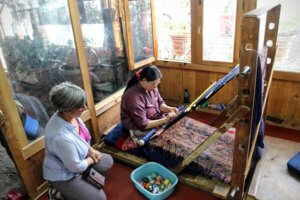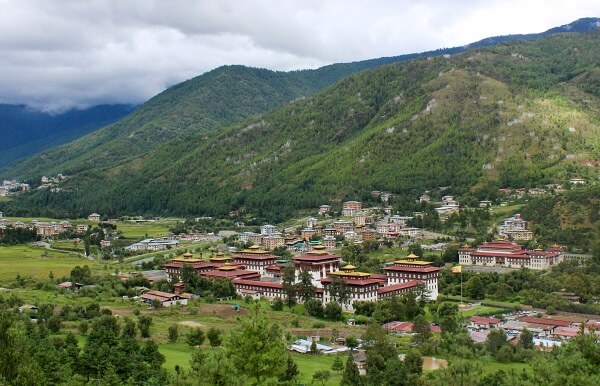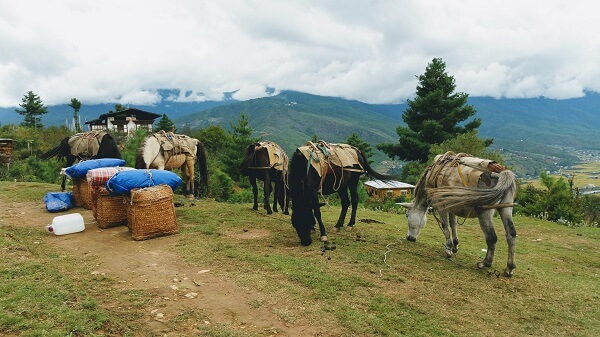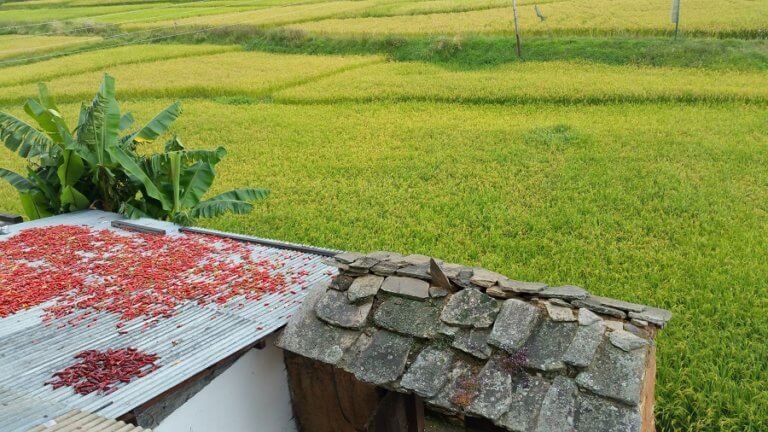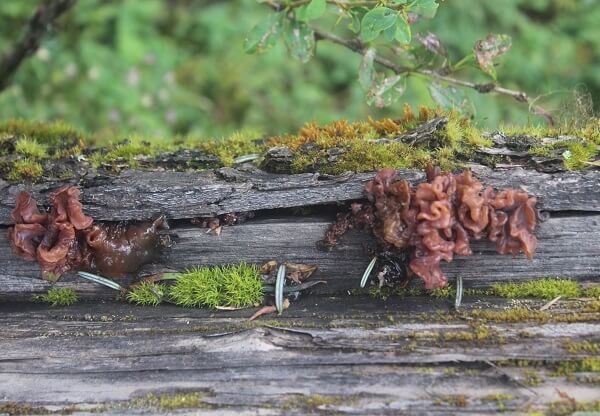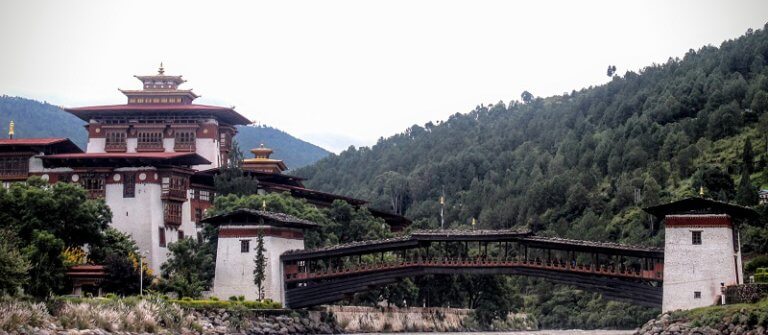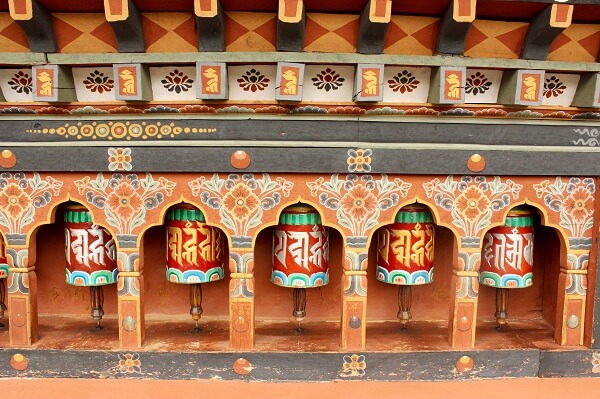
Melanie on 12 September 2016
We began the day with what would normally be a mundane task – getting cash! In this instance a trip to the Bank of Bhutan was a fascinating experience. The bank was filled with a buzz of tellers, people, and lots of paperwork. Almost everyone was in the national dress, our first real experience and something that was born out as we travelled. It was nice to have Tshering and Dorji – guide and driver with us to navigate the system.
First stop the Royal Textile Museum part of the Royal Textile Academy and an absorbing and fascinating collection showing the history of textiles through artifacts, textiles, jewellery and costumes. The building itself was a beautiful spacious traditional building established as the Royal Textile Academy in 2005 with the Queen Mother as patron. We were particularly engaged by a video demonstrating how to put on a Gho – traditional dress of the men.
Following this on to the Jungshi Paper Factory, a traditional paper making factory. The paper is made using local materials, predominantly the Daphne tree along with flowers and plants to decorate the paper.
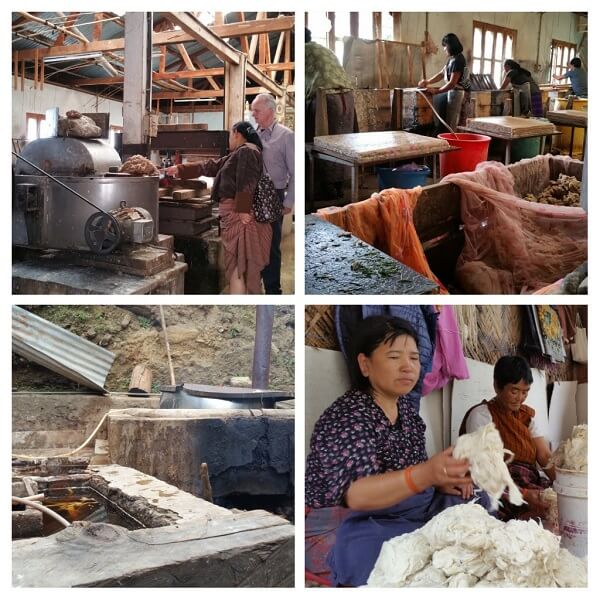
The paper-making process is labour intensive from the shredding of the bark to the drying of the finished paper. The paper is made into a variety of products including light shades and notebooks .
Next another craft the Gagyel Lhundrup Weaving Centre https://www.tripadvisor.com.au/Attraction_Review-g293845-d6548799-Reviews-Gagyel_Lhundrup_Weaving_Centre-Thimphu_Thimphu_District.html . I was particularly interested in the weaving processes and styles here after visiting weavers in Timor-Leste and years of acquiring beautiful woven goods from Fundasaun Alola. Both countries continue with traditional methods and use of the fabrics for traditional dress and while methods were similar (back strap looms) the cloth was quite different. http://wanderlustandlipstick.com/blogs/wandershopper/2013/09/30/in-bhutan-weaving-traditions-are-preserved/
Lunch was at a restaurant named after not the Sound of Music but a local flower – Edelweiss. A selection of dishes and an extra dish – that of the traditional Ema Datshi – chilli and cheese – ordered by Tshering and the first of it being a regular accompaniment to our meal.
This was also the first day we experienced the parking attendants of Thimpu – reverse out of your car park onto the street and you will see someone come running from wherever they are in the street to gather the fee. If traffic is heavy they assist you out of the car park by tapping on the boot of the car to direct you out.
First stop after lunch a viewpoint over Thimpu where the Dzong takes centre stage and the hills are dotted with white flags placed across the hills on behalf of a deceased person, as a way of ensuring the person finds the right path to the next life.
After lunch we headed to the Zilukha Nunnery and one of my favourite memories of this trip. Time spent meditating in front of the statue of Green Tara. In the incense filled room the rise and fall of the chanting of the nuns in their vermillion and red robes around the wall. From beyond the room the drums loud then soft, rhythmically pound driving out all thoughts.
Before heading to the Dzong – which opened to visitors after close of business, we were promised an excellent cup of coffee. Sure enough the Ambient Café roasted its own beans and made great coffee accompanied by delicious and decadent cakes.
Another memory of this day came while waiting in the queues of tourists waiting to enter the Tashichö Dzong. Tshering drew in her breath and we turned to see a large black car pull up at the base of the stairs. We are told in hushed and reverent tones this is the Monk who is second in charge. As he steps out of the car and strides inside without a glance to left or right. Once we are inside the Dzong we see the three thrones for the King, the Chief Abbot and to the left the seat for the Monk we have just seen enter the building.
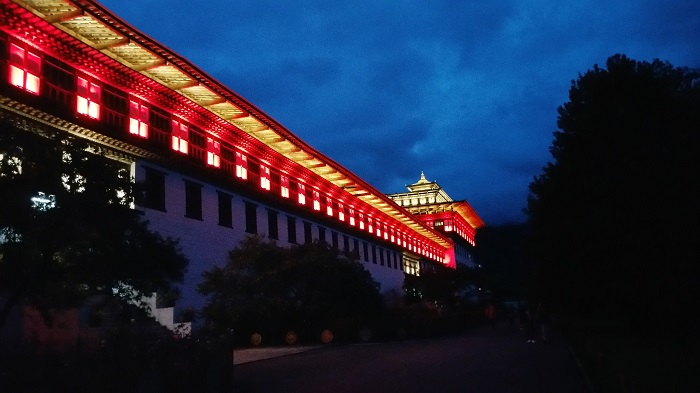
After seeing the Dzong from afar we now get to see if by day and night – the latter when it is fully lit.
